








| Eastern Gray Squirrel (Sciurus carolinensis (Gmelin, 1788)) |









|
|
Scientific name: Sciurus carolinensis (Gmelin, 1788) Common name: Eastern Gray Squirrel French name: Écureuil gris Family: Sciuridae Size: Weight : between 400 and 750g. Size : Body : 25 to 30 cm, Tail : 15 to 25 cm Biotope: Forests. You can also find it in parks and gardens. Food: Nuts, berries, buds, flowers, but also cereals, insects, eggs and chicks, frogs. European populations tend to attack tree barks and are causing serious damage to plantations. The Eastern Grey Squirrel also stores food buried in caches for winter. It does not hibernate and must eat every day. Longevity : A maximum of 12 years in the wild. Some squirrels in captivity have reached 20 years old. Geographic area: East of North America, north to Canada. It has been introduced to South Africa, to Ireland, to Scotland, to England and to Italy. |
The Eastern Grey Squirrel is a medium size rodent living in woodlands. The upper side is grey to dark grey. The ears and the underside are pale grey to white. Squirrels in the northern area of the range are darker and almost black. Both sexes are similar. There are two litters per year of two to four babies. Baby Grey Squirrels are born naked. The mother takes care of the young squirrels till they become independent. The increase of European populations of Eastern Grey Squirrel is a threat for Red Squirrel populations. |
| [To know more about the Eastern Gray Squirrel] [Next picture] [Top] |
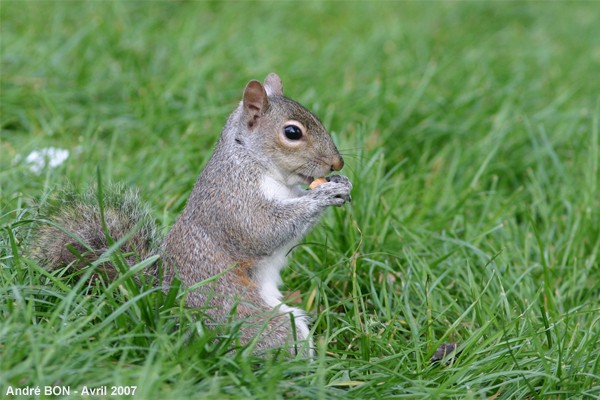
|
You cannot miss Eastern Grey Squirrels when you walk through Hyde Park. |
| [To know more about the Eastern Gray Squirrel] [Next picture] [Previous picture] [Top] |
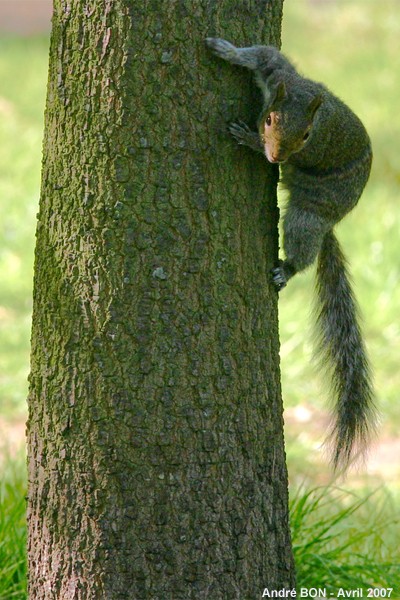
|
Like most of squirrels, the Eastern Grey Squirrel is a champion to climb on trees and move along the branches. |
| [To know more about the Eastern Gray Squirrel] [Next picture] [Previous picture] [Top] |
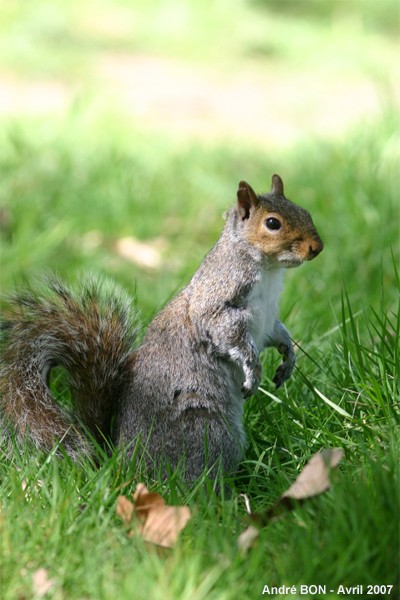
|
Used to seeing people, the Eastern Grey Squirrels in Hyde Park are not very shy. |
| [To know more about the Eastern Gray Squirrel] [Next picture] [Previous picture] [Top] |
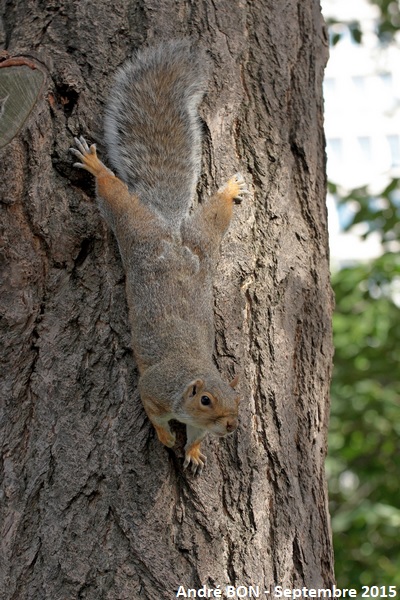
|
I read in a tourist guide that Washington Square Park is a squirrel's paradise, I confirm! |
| [To know more about the Eastern Gray Squirrel] [Next picture] [Previous picture] [Top] |
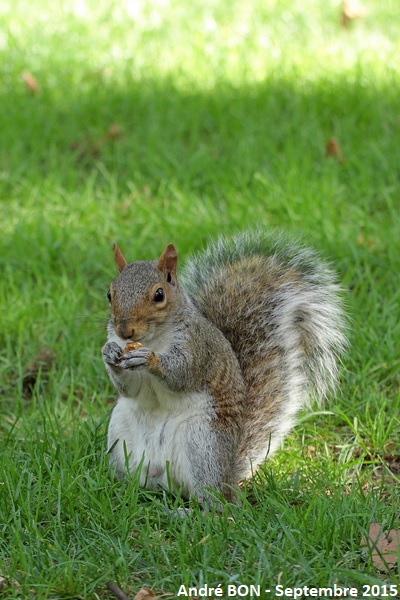
|
I think squirrels like this park because people are feeding them. This may be the case in all of the city's parks … |
| [To know more about the Eastern Gray Squirrel] [Next picture] [Previous picture] [Top] |
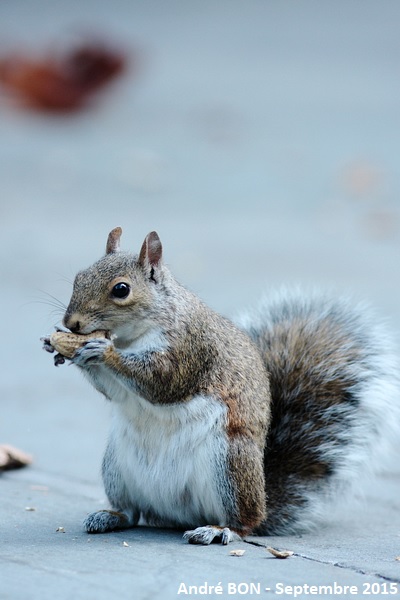
|
The park is much larger here. You can find something to eat there but it is still easier by approaching generous walkers. |
| [To know more about the Eastern Gray Squirrel] [Next picture] [Previous picture] [Top] |
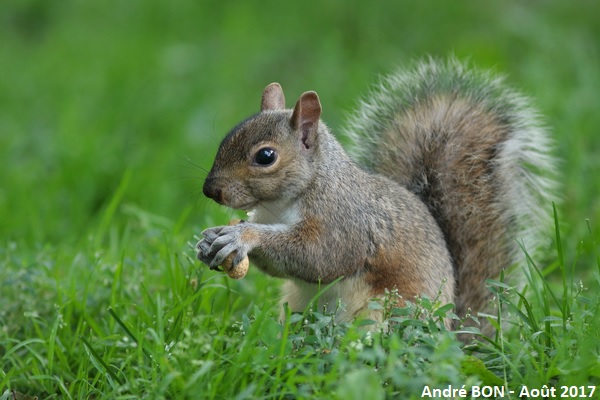
|
Here too Eastern Gray Squirrels are not unhappy, walkers or regulars take care of feeding them. |
| [To know more about the Eastern Gray Squirrel] [Next picture] [Previous picture] [Top] |
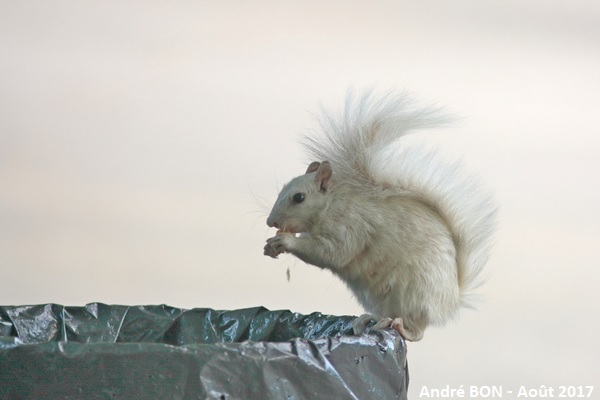
|
This white Eastern Gray Squirrel has leucism. The other white form, caused by albinism, is recognized by red eyes. These white forms are more easily detected by predators, which explains why it is quite rare to observe them in the wild. The low number of predators in urban parks explains why you can see them more easily here. |
| [To know more about the Eastern Gray Squirrel] [Previous picture] [Top] |
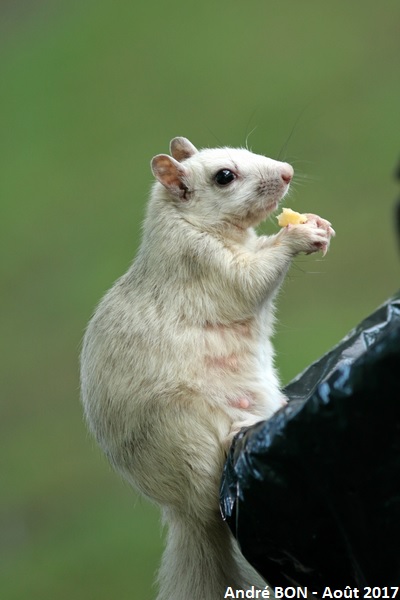
|
The nipples are visible in this photo, so it must be a lactating female. As I read that leucism is of genetic origin I wonder if the baby squirrels are white. |